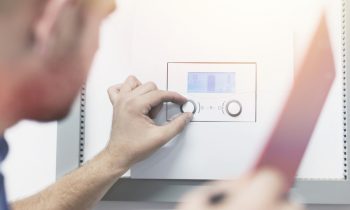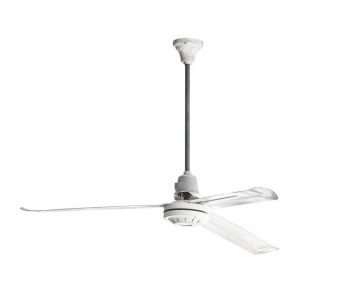
Choosing the right temperature for your air conditioner can be a tricky task. It’s not just about comfort, but also about energy efficiency, saving on electricity bills, and ensuring the lifespan of your AC unit. In this comprehensive guide, we’ll explore everything you need to know about setting the right temperature for your air conditioner.
The ideal temperature to set your AC depends on various factors, but the U.S. Department of Energy recommends setting it to 78 degrees Fahrenheit (25.5 degrees Celsius) when you’re at home and need cooling. For energy efficiency, you can raise the thermostat when you’re away from home, and for optimal sleep, the National Sleep Foundation suggests setting your bedroom temperature between 60 and 67 degrees Fahrenheit. Remember, personal comfort, energy efficiency, time of day, and other factors can affect the ideal temperature setting.
The Ideal AC Temperature for Comfort
According to the U.S. Department of Energy, the recommended temperature setting for your home during summer is 78 degrees Fahrenheit (25.5 degrees Celsius) when you’re at home and need cooling. However, comfort levels may vary from person to person. Some people might prefer cooler temperatures, especially in regions with high humidity or during peak summer months.
The Optimal Temperature for Energy Efficiency
Setting the AC to the right temperature can contribute to energy efficiency and savings on electricity bills. The U.S. Department of Energy states that you can save about 3-5% on your energy costs for every degree you raise your thermostat in the summer. Therefore, setting your thermostat to 78°F (25.5°C) when you are at home and need cooling is a good starting point for balancing energy savings and comfort.
When you’re away from home, the Department of Energy suggests setting the thermostat to 85°F (29.4°C) to save energy. However, remember that each individual’s comfort level may vary, so it’s essential to experiment with different settings to find the most comfortable and energy-efficient temperature for your specific situation.
Day Vs. Night: Does the Time of Day Matter?
Yes, the time of day can affect the ideal temperature setting for your AC. During the day, the general recommended setting is 78 degrees Fahrenheit. But when it comes to nighttime, the National Sleep Foundation suggests setting your bedroom temperature between 60 and 67 degrees Fahrenheit for optimal sleep.
Factors to Consider When Setting Your AC Temperature
There are several factors to consider when deciding the temperature setting of your AC. These include:
- Personal comfort: Different people have different comfort levels, so it’s essential to find a temperature that suits your preferences.
- Energy efficiency: Lowering the temperature too much can increase energy consumption, so it’s crucial to find a balance between comfort and energy usage.
- Time of day: The ideal temperature setting may vary depending on the time of day, whether you’re at home, away, or asleep.
- Outdoor temperature: The difference between the outdoor and indoor temperatures can affect your AC’s energy efficiency.
- Humidity levels: High humidity levels can make it feel hotter, so you might need to adjust the temperature setting accordingly.
- Number of people and activity levels: More people and higher activity levels can generate more heat, requiring a lower temperature setting.
- Home insulation and external factors: The amount of direct sunlight, number of windows, and insulation quality can affect the temperature setting.
The Impact of AC Temperature Setting on the Lifespan and Performance of Your AC Unit
The AC temperature setting impacts the lifespan and performance of the AC unit in several ways. Setting the thermostat too low can strain the cooling system, causing it to lose efficiency and increase the cost of cooling the house. Running the unit continuously, especially at high cooling settings, can strain the system and shorten its lifespan.
To optimize the performance and longevity of your AC unit, it is advisable to use a programmable thermostat and maintain a temperature setting between 76-78 degrees Fahrenheit.
Health Considerations When Setting the AC Temperature
Certain health considerations should be taken into account when setting the AC temperature. These include avoiding extremely cold temperatures, maintaining regular maintenance of your AC unit, setting an optimal sleep temperature, and considering the number of people in a room.
By following these guidelines and maintaining your AC system, you can minimize potential health risks and enjoy a comfortable indoor environment.
Conclusion
In conclusion, the ideal temperature to set your AC depends on various factors, including your comfort, energy efficiency goals, the number of people in the room, and the time of day. Experiment with different settings, consider the factors mentioned above, and find the most comfortable and energy-efficient temperature for your specific situation. Remember, small adjustments can lead to significant savings over time.
Frequently Asked Questions
What happens if I set my AC temperature too low?
If you set your AC temperature too low, it may result in increased energy consumption and strain on your AC unit. This could lead to higher electricity bills and potentially shorten the lifespan of your unit.
How does a programmable thermostat help in managing the AC temperature?
A programmable thermostat allows you to set your AC temperature for different times of the day automatically. This means you can have a cooler temperature when you’re at home and a higher temperature when you’re away, increasing energy efficiency and reducing costs.
How does outdoor temperature affect my AC temperature setting?
The greater the difference between the outdoor and indoor temperatures, the harder your AC unit has to work to maintain the desired temperature. This can increase energy consumption, so it’s best to aim for a temperature that’s comfortable but not drastically different from the outdoor temperature.
How do humidity levels affect the AC temperature setting?
High humidity levels can make the air feel hotter than it actually is. Your AC unit also has to work harder to remove the moisture from the air, using more energy. Therefore, in high humidity conditions, you may need to set your AC temperature lower to achieve the same level of comfort.
How often should I service my AC unit for optimal performance?
It’s generally recommended to have your AC unit serviced at least once a year. Regular maintenance can help ensure it operates at peak efficiency, prolong its lifespan, and prevent potential health risks from issues like mold growth.












